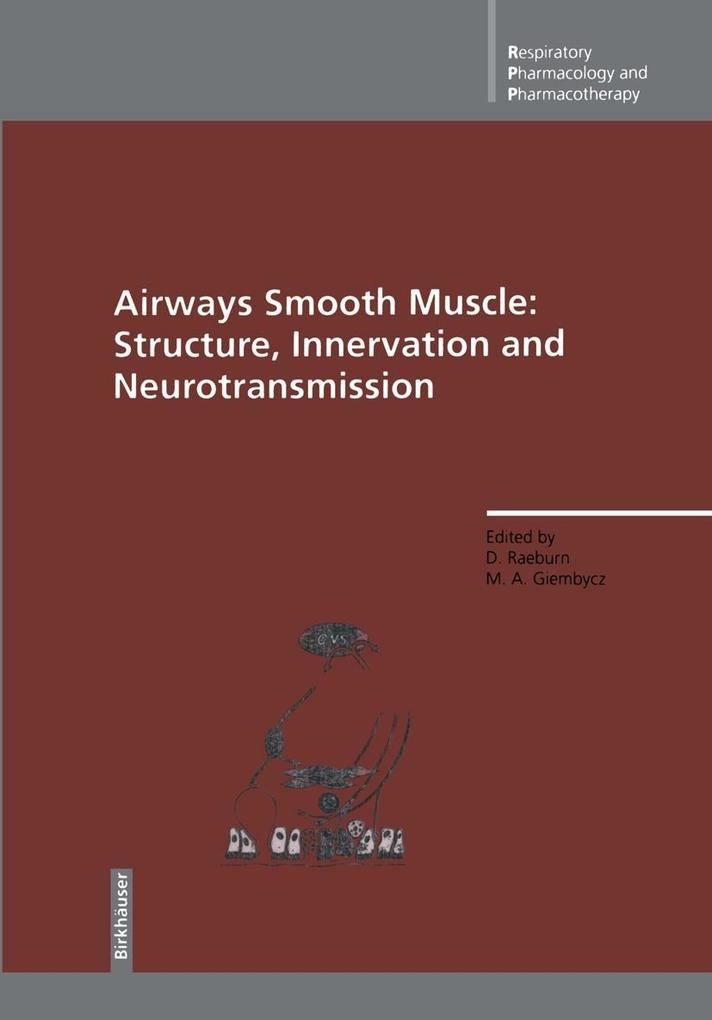
Sofort lieferbar (Download)
Many factors may influence the release of neurotransmitters from airway nerves [1]. This is likely to be important in physiological control of airway functions and may be particularly relevant in airway diseases, such as asthma and chronic obstructive pulmonary disease (COPD). Neural elements in airways interact in a complex manner and the activation of certain neural pathways may profoundly influence the release of transmitters from other neural pathways. Similarly inflamma tory mediators released from inflammatory cells in the airways may also modulate neurotransmitter release. There are marked differences be tween species in airway innervation and in neuromodulatory effects and, wherever possible, studies in human airways have been emphasised, although information on neuromodulation in human airways is some what limited at present. Release of neurotransmitters from nerve terminals occurs via a Ca2+ dependent secretion evoked by a nerve action potential, but may also be evoked experimentally by a high extracellular K + concentration which directly depolarises the nerve terminal membrane. Modulation refers to the alteration of neurotransmitter release, which may either be increased (facilitation) or reduced (inhibition) by the action of a particular agent, thus changing the magnitude of the neurally-mediated response. Such agents would normally act on receptors on the nerve terminal which are referred to as pre-junctional (or presynaptic) receptors, in contrast to post-junctional (or post-synaptic) receptors located on the target cells which are influenced by that particular transmitter.
Inhaltsverzeichnis
1. Anatomy of Airways Smooth Muscle.- 2. Role of the Sympathetic Nervous System and Endogenous Catecholamines in the Regulation of Airways Smooth Muscle Tone.- 3. Parasympathetic Innervation of Airways Smooth Muscle.- 4. Airways Ganglia.- 5. Excitatory Nonadrenergic, Noncholinergic Innervation of Airways Smooth Muscle: Role of Peptides.- 6. Inhibitory Nonadrenergic, Noncholinergic Innervation of Airways Smooth Muscle: Role of Vasoactive Intestinal Peptide and Structurally Related Molecules.- 7. Inhibitory Nonadrenergic, Noncholinergic Innervation of Airways Smooth Muscle: Role of Nitric Oxide.- 8. Immunocytochemistry and Molecular Biology in the Identification of Peptide-Containing Nerves.- 9. Modulation of Neurotransmitter Release from Airways Nerves.- 10. Autoregulation of Cholinergic Neurotransmission in Airways Nerves.- 11. Vagal Reflexes.- 12. Neural Elements in Human Airways.
Produktdetails
Erscheinungsdatum
09. März 2013
Sprache
englisch
Auflage
1994
Seitenanzahl
332
Dateigröße
37,50 MB
Reihe
Respiratory Pharmacology and Pharmacotherapy
Herausgegeben von
Mark A. Giembycz, David Raeburn
Verlag/Hersteller
Kopierschutz
mit Wasserzeichen versehen
Produktart
EBOOK
Dateiformat
PDF
ISBN
9783034875585
Entdecken Sie mehr
Bewertungen
0 Bewertungen
Es wurden noch keine Bewertungen abgegeben. Schreiben Sie die erste Bewertung zu "Airways Smooth Muscle" und helfen Sie damit anderen bei der Kaufentscheidung.









